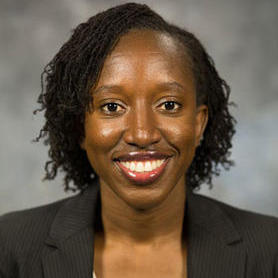
Government corruption has universally corrosive effects on U.S. society. Yet there is little uniformity to the structure of state-level corruption oversight agencies. Syrena Shirley, an assistant professor of accounting at Mason, recently published a research paper in Current Issues in Auditing suggesting that in the fight against corruption, these structural inconsistencies are impactful. Though rarely studied, they yield important insights that could help agencies throughout the country improve their effectiveness.
U.S. states have two main functions for identifying and combating corruption: financial statement audits for various state and local government units, and fraud investigation entities which usually include whistle-blower programs. States can choose either to manage both in-house, or to outsource one or both to external vendors. Specifically, states that keep fraud examination in-house can either situate both functions within the audit agency, or assign fraud investigation elsewhere (in most cases, the state attorney general’s office).
To gauge the real-world implications of these choices, Shirley and her co-authors Renee Flasher of The Pennsylvania State University—Harrisburg and James P. Higgins of LWG CPA & Advisors culled data from state agency websites as well as a sprawling reference guide called the Book of the States. Because records regarding less egregious corruption charges that stay at the state or local level are spotty at best, the researchers relied upon federal corruption conviction statistics from the U.S. Department of Justice (DOJ) as a rough index.
The analysis revealed a clear pattern: States whose audit departments handled both financial vetting and fraud investigations had fewer state and local government officials convicted of corruption, while those that outsourced and/or split the two had a higher number of convictions. This pattern held after the researchers controlled for the ratio of police officers to population, reflecting each state’s general toughness on crime.
Shirley offers two possible explanations for her findings. First, she says “there is more efficiency with the two groups being in closer contact and closer communication” when fraud investigators work within state audit agencies rather than the attorney general’s office or a third-party contractor. This may increase the likelihood of corrupt officials being caught before their misconduct rises to the level of a DOJ indictment.
Second, the united front of fraud investigation and financial audits possibly projects an intimidating image to would-be fraudsters that may prevent them from stepping out of line in the first place. “You’re sending this message of strict oversight, and paying close attention to what’s going on, through the combined structure,” Shirley says. “That’s where we’re saying some of the deterrence benefit is coming from.”
However, she hesitates to say for sure whether her findings are primarily driven by deterrence, increased efficiency in detection or a combination of the two. “With this research design and with the data that we have, we are very limited in making a causation statement and so this is more of an association.”
Shirley suggests that her research into audit agencies may help state and local governments evolve anti-corruption best practices and learn from one another. “Many states and local governments operate independently. Further, they may operate the way they’ve been designed since however long, without necessarily thinking about efficiencies from other places, or good habits from elsewhere that could be adopted.”
Shirley says she would like to delve deeper into the lesser-known inducements and hindrances to government malfeasance such as corruption. A former auditor for KPMG and accountant at JPMorgan, her PhD dissertation addressed corporate misconduct. Currently, her academic research—the present paper is her debut publication—resides at the intersection of accounting and the law. “Most of the studies I’m looking at have to do with misconduct, whether it’s public corruption involving government officials or in the corporate world,” she says.
The first hurdle for corruption researchers to overcome, Shirley suggests, is often incomplete or fractured data. Take the present study as an example. The lack of a central database of state audit practices required Shirley and her collaborators to scour state government websites and hand-collect information. “Part of where we come in with our research is looking at the data that doesn’t exist in a nice form. This is how issues can permeate where nobody’s really looking at it, because nobody can quantify it.”
Shirley’s research concentration feeds into her classroom work, which includes teaching fraud examination to Mason graduate students. “Overall, the takeaway—and this is what I tell my students in class—is that fraud is real, corruption is real, and it’s something that we have to be more vigilant about tackling.”
